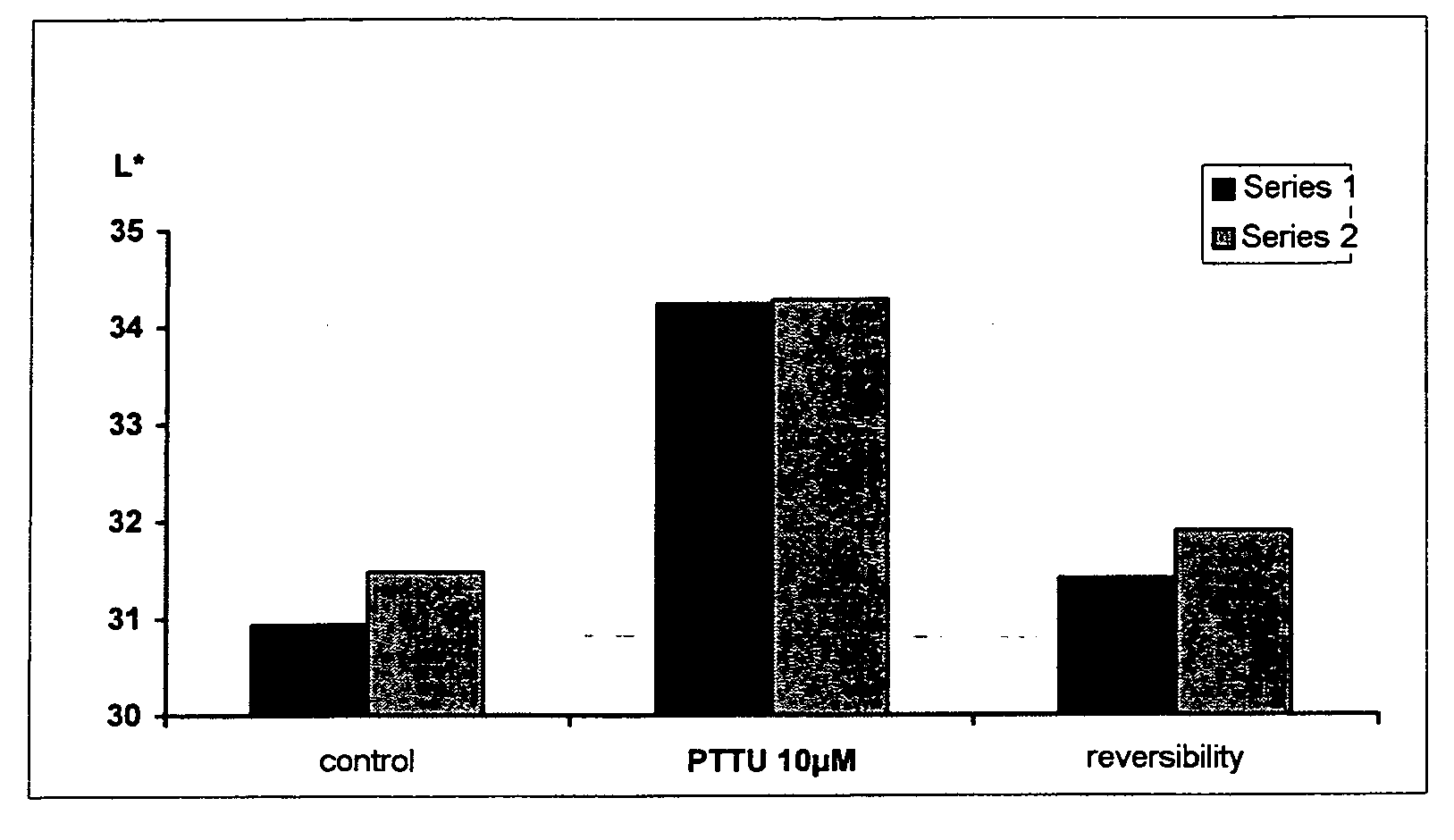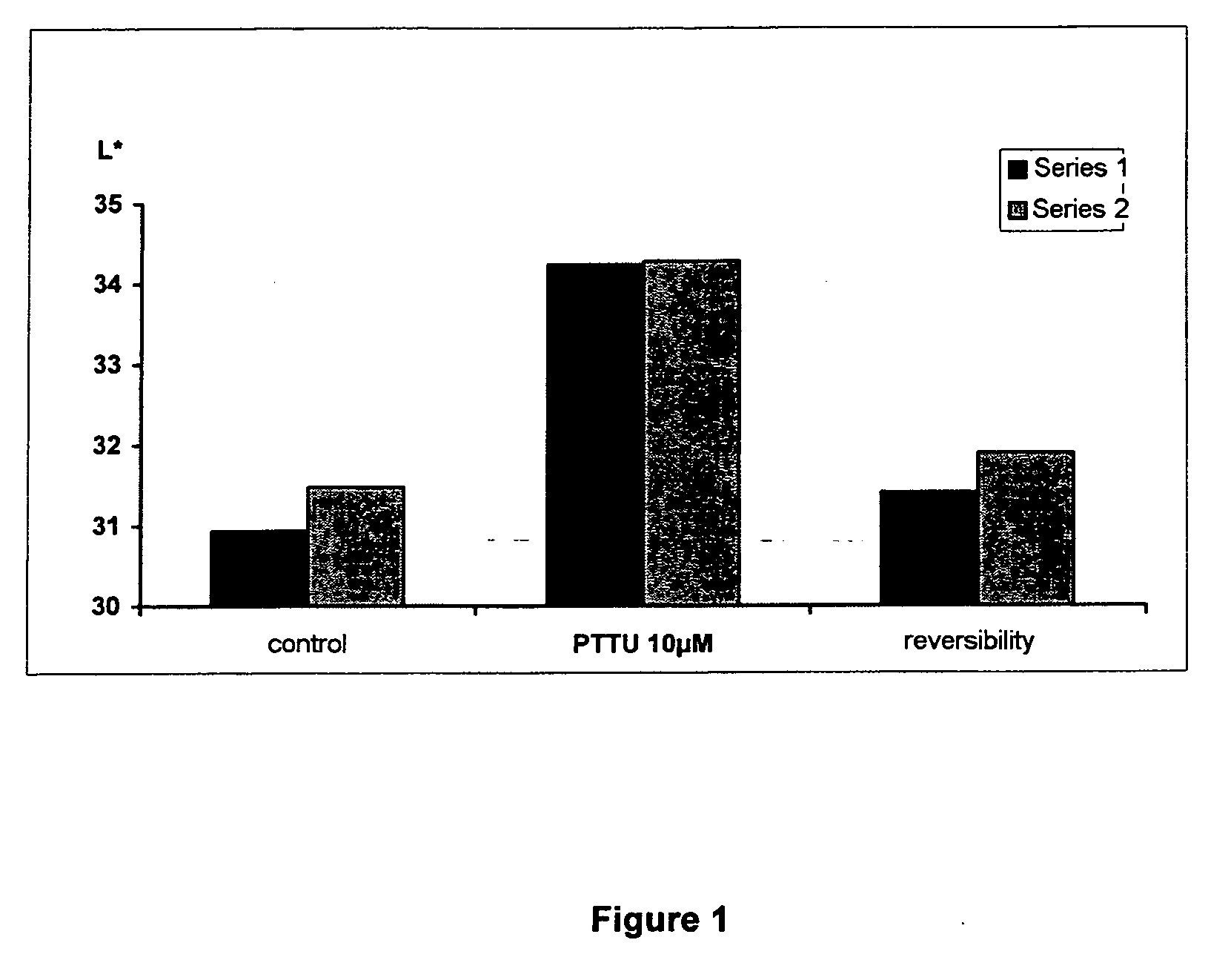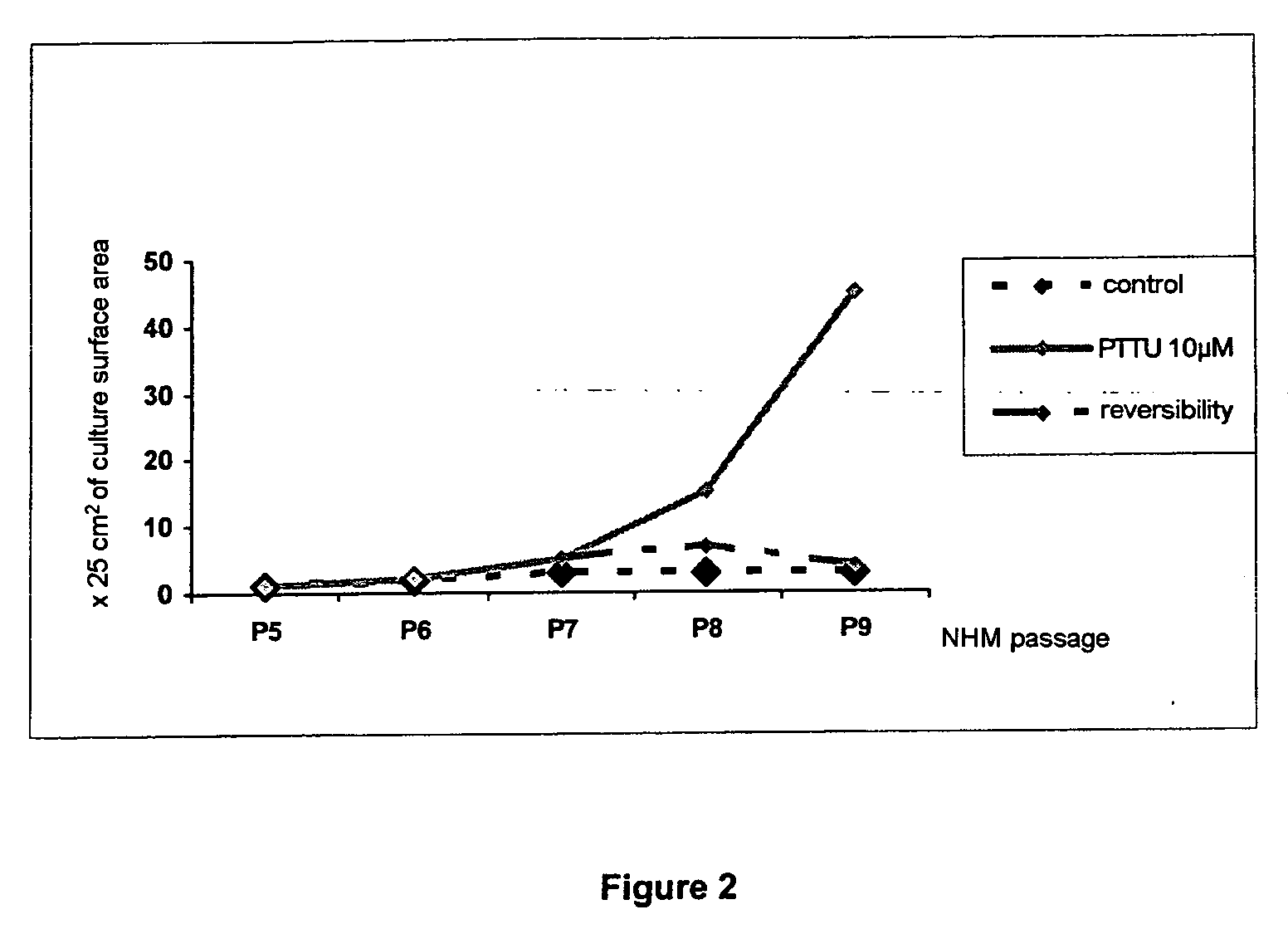PTU compounds for promoting the in vitro culture of (highly pigmented) melanocytes
- Summary
- Abstract
- Description
- Claims
- Application Information
AI Technical Summary
Benefits of technology
Problems solved by technology
Method used
Image
Examples
example 1
Effect of PTU on the Culture of Melanocytes of Phototype VI (African)
[0144] a) Preparation of a Primary Culture of African Melanocytes
[0145] The melanocytes were obtained from a foreskin of an African child according to the following protocol: the skin is cut into fragments of 6 mm and incubated at +4° C. overnight in the presence of 0.25% trypsin. The epidermis is then separated from the dermis in foetal calf serum. The pieces of dermis are scraped in order to recover the basal cells and the melanocytes. The epidermal fragments are then vortexed and the cells are then centrifuged at 190 G for 5 min. These cells (mixture of melanocytes and keratinocytes) are counted and seeded at a density of 8 to 15×106 cells per 75 cm2 flask, in 18 to 20 ml of M2 medium (Promocell).
[0146] The melanocytes are then purified according to the following protocol: the culture medium is changed 3 times a week and when the cells are confluent, the flasks are emptied and rinsed once with PBS —Ca2+ Mg2+....
example 2
Preparation of a Highly Pigmented Reconstructed Epidermis
[0175] The melanocytes multiplied in the presence of PTU can also be used in a method for obtaining a reconstructed epidermis as described below.
[0176] Unless otherwise indicated, all the media and buffers used are described in Régnier et al., Cell. Mol. Biol.; 45, 969-980, 1999; Duval et al., Pigment cell Res., 15, 440-446, 2002; Duval et al., Pigment cell Res., 14, 348-355, 2001.
[0177] The dermal supports or equivalents are prepared as described in Régnier et al., Front Matrix Biol., 9, 4-35, 1981; Régnier et al., J. Invest. Dermatol., 109, 510-512, 1997; Tinois et al., Exp. Cell Res., 193, 310-319, 1991; preferably, the biodressing for reconstructed epidermis (BPER) EPISKIN® support will be used, or any other synthetic membrane, uncoated or coated with a film of dermal macromolecules, it being possible for these membranes to be collagen sponges, dermal equivalents containing viable cells, fibroblasts, endothelial cells, ...
example 3
Use of the Pigmented Reconstructed Epidermides Obtained with PTU, as Models for Screening Depigmenting Active Agents
[0189] The epidermis reconstructed from melanocytes of phototype VI (African), prepared under the conditions of Example 2, is used to screen the depigmenting activity of active agents.
[0190] The test products—arbutin at 100 μM and vitamin C phosphate at 280 μM—are applied topically to said reconstructed epidermis: 3 applications (3 μM / sample) for 5 days from the 5th day of immersion.
[0191] Vitamin C phosphate at 280 μM is also applied systemically, i.e., in the culture medium, throughout the duration of the epidermal reconstruction.
[0192] The control is the measurement of luminance of the reconstructed epidermis in the absence of test product.
[0193] On epidermis reconstructed on BPER (Episkin®), since the dermal support is translucent, it cannot be evaluated directly on the samples. The latter are therefore de-epidermalized and then digested with a solution of pro...
PUM
 Login to View More
Login to View More Abstract
Description
Claims
Application Information
 Login to View More
Login to View More - R&D
- Intellectual Property
- Life Sciences
- Materials
- Tech Scout
- Unparalleled Data Quality
- Higher Quality Content
- 60% Fewer Hallucinations
Browse by: Latest US Patents, China's latest patents, Technical Efficacy Thesaurus, Application Domain, Technology Topic, Popular Technical Reports.
© 2025 PatSnap. All rights reserved.Legal|Privacy policy|Modern Slavery Act Transparency Statement|Sitemap|About US| Contact US: help@patsnap.com



